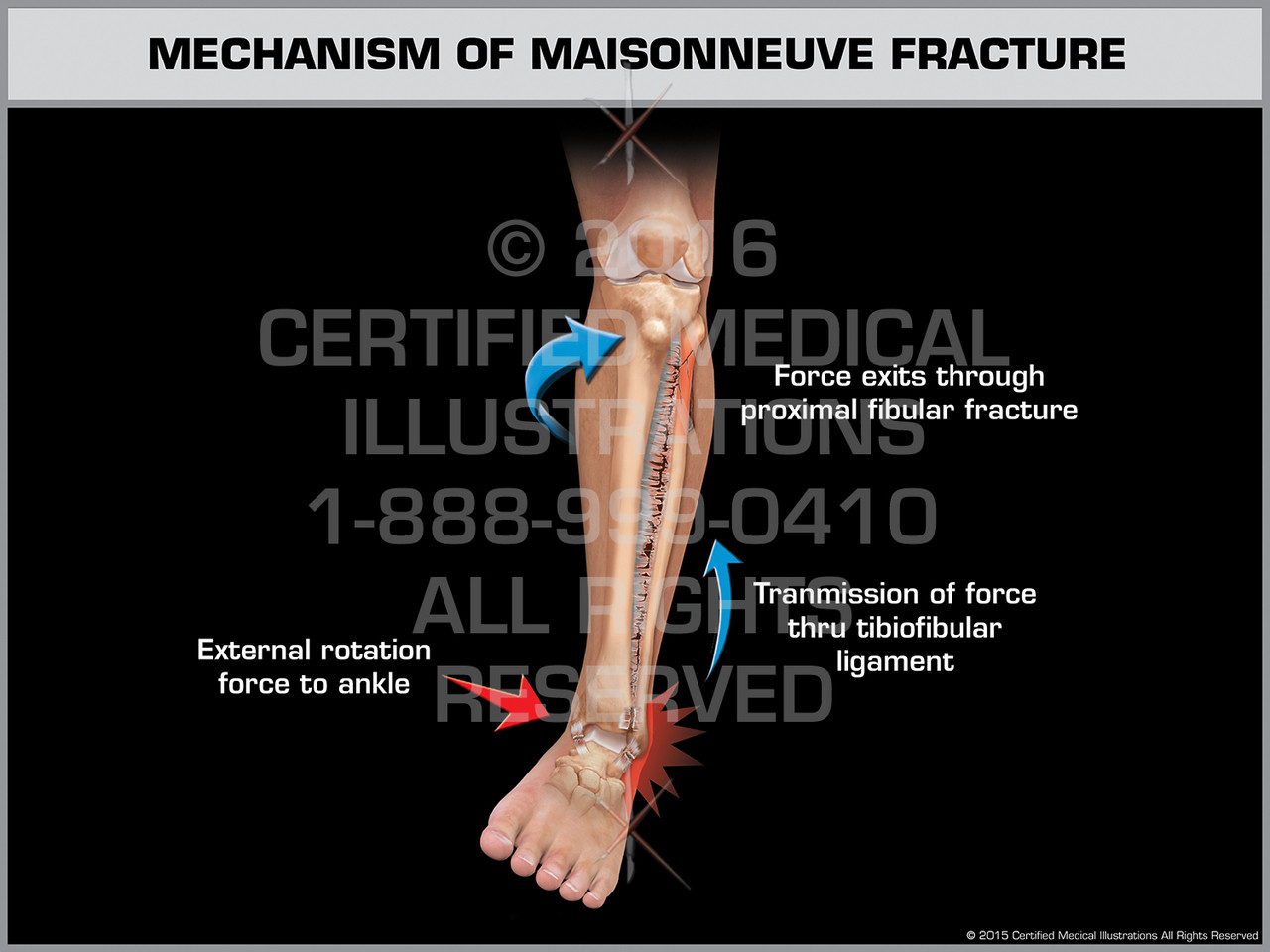


One of the pitfalls in the surgical treatment of Maisonneuve fractures: A case report. Maisonneuve fracture: A type of ankle fracture. Pathoanatomy and injury mechanism of typical Maisonneuve fracture. Arthroscopic findings and treatment of Maisonneuve fracture complex.

You can learn more about how we ensure our content is accurate and current by reading our editorial policy. We link primary sources - including studies, scientific references, and statistics - within each article and also list them in the resources section at the bottom of our articles. Medical News Today has strict sourcing guidelines and draws only from peer-reviewed studies, academic research institutions, and medical journals and associations. The force from the pressure travels upward through the medial malleolus and the deltoid ligament and causes the fibula to fracture. In the external rotation, the talus also puts pressure on the lateral malleolus and causes strain to the ligaments between the tibia and fibula. The talus externally rotates, causing stress to the ankle and resulting in a malleolus fracture or a rupture in the deltoid ligament. In a Maisonneuve fracture, the extreme force resulting from external rotation of the foot strains the bones and ligaments in the ankle. The medial malleolus at the bottom of the tibia, the lateral malleolus of the fibula in the lower leg, and the surface of the talus form the surface of the ankle. The ankle joint comprises the fibula, the distal tibia, and the talus, a bone in the ankle joined to the tibia and fibula. The major ligament in the ankle is the deltoid ligament, which attaches to the ankle, foot, and leg bones. Ligaments stabilize joints and help ensure they do not twist and dislocate. Ligaments connect bones, especially in the joints, and are strong and rope-like. The fibula forms the top of the ankle and reaches to the back of the knee. The fibula, which people also refer to as the calf bone, is one of two long bones of the lower leg, along with the tibia. Share on Pinterest Illustrated by Jason HoffmanĪ Maisonneuve fracture typically involves ligaments in the ankle, the fibula, and other parts of the ankle and leg.


 0 kommentar(er)
0 kommentar(er)
